All the seven segment displays I’ve seen so far have their decimal point to the right of the main digit. Why is this so? A decimal point to the left will be able to represent more possible combinations of numbers.
A single digit display with a decimal point on the left can represent nine more possible numbers (\$ .1,\ \ldots ,\ .9 \$) than the common display with decimal point at the right.
Edit: Why also do the digits lean towards right?


